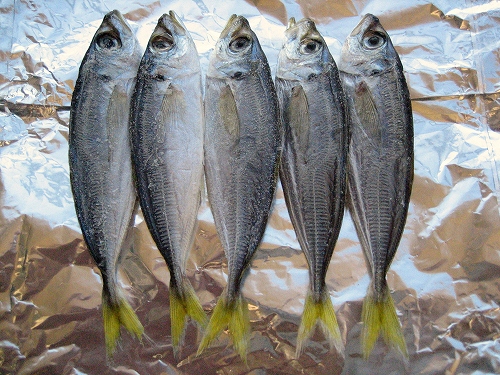「四隅突出型墳丘墓」 [つれづれ樹] [育まれる(歴史)]
古事記は 712年(8世紀)のものです。
崇神天皇(紀元前148年~紀元前29年1月9日)は、現代日本の学術上、実在可能性が見込める初めての天皇であると言われている。
崇神天皇は 3世紀から4世紀初め(200~320年)に実在したという説もある。
古事記は 712年の時点で 天皇家の正当性をきちんと知らしめることを目的として編纂された。
それ故、
少なくとも 600年以前の古事記に記された日本の歴史は 考古学的資料によって 前向きに 裏打ちされる必要があります。。。
“神話”部分の記述は 伝承された歴史的な事実を基にされたと考え、出来得る限り、再点検されるべき。
逆説的にも 古事記は&万葉集は 歴史的に貴重な“遺産”です。
ここに 白川静氏の漢字を基底にした 東洋史解釈の方法も生きる。
「四隅突出型墳丘墓」
日本海側中心に分布し 90基ほどが見られる。
① 弥生時代 中期以降に造成された。
広島県三次盆地
② 弥生時代後期
美作・備後北部
③ 弥生時代後期後半(3世紀前後)
墳丘墓の形に変化がある。
出雲(島根東部)・伯耆(鳥取西部)
北陸地方では これより少し遅れる。
「四隅突出型墳丘墓」を造る勢力が、
三次盆地→ 美作・備後北部→ 出雲(島根東部)・伯耆(鳥取西部)→ 北陸地方 へと勢力範囲を拡大し、3世紀前後には 吉備・山陰・北陸地方で 大きな勢力を有した。。
西谷3号基(四隅突出型墳墓)
出雲市街南東部。
2世紀末~3世紀 (弥生時代後期から古墳時代前期)築造。
出土した土器の分類により、出雲と岡山・北陸地方の繋がりが見受けられる。
水銀朱&鉄剣も出土
奴奈川姫
http://ja.wikipedia.org/wiki/沼河比売
古事記には記されるが 日本書紀では消されている。
『万葉集』に詠まれた 「渟名河(ぬなかは)の 底なる玉 求めて 得まし玉かも 拾ひて 得まし玉かも 惜(あたら)しき君が 老ゆらく惜(を)しも」 (巻十三 三二四七 作者未詳)
“奴”はヒスイを象徴し、越の国地域に勢力を持った。
この時代の 翡翠は100%糸魚川産出である。
銅鐸は 弥生時代の初期より見られ、近畿・四国を中心に 広く分布する。
加茂岩倉遺跡(弥生時代) 39個(国宝)出土。
銅鐸の製作年代は 弥生時代中期から後期
荒神谷遺跡出土の銅鐸にも 同じものがある。
銅剣は 九州から 中国地方・四国を中心に分布し、初期のものは“細型”
荒神谷遺跡「神庭荒神谷遺跡」(出雲) 358本の銅剣(弥生時代中期後半 中細型)出土(国宝)。
銅鐸6個(弥生時代前期末から中期中頃)、
銅矛16本(弥生時代中期後半 北部九州製)が出土(国宝)。

IXYDIGITAL60(ISO50)&PHOTOSYOP
太郎さんのお薦め
【杉本商会】
http://web.mac.com/haruhisa_i/Site/Welcome.html
(木工芸・杉玉・お茶を 扱われてます。)
【Welcome to My Art Room】
http://web.me.com/haruhisa_i/
(色彩を 操られています。)
【ベタ(scope)】
古事記は 天武天皇(大海人皇子)の命によって作られた。
天武天皇は、
天皇を称号とし、日本を国号とした最初の天皇。
和号“あまのぬなはらおきのまひとのすめらみこと” (天渟中原瀛真人天皇)。
大海人皇子は 「凡海氏(海部一族の伴造)」によって養育された。
日本書紀に 出生年の記載がないのは 天武天皇と崇峻天皇のみ。
国の正史である日本書紀で 天皇の“出生年”が記載されないことは 異常です。
実際には 不明であっても、より可能性のある“年”を確定し、きちんと掲載されるのが 正史とされるもんです。
意図的に 掲載されなかったと思われます。
古事記は 日本列島の形成神話から、推古天皇の時代までの出来事を記しており、歌謡が多く取り込まれている。。
この時代は 現在に至る日本史において 特殊な時代です。
ポット出の素性の知れぬ中臣(藤原)氏が 壬申の乱によって 由緒ある蘇我氏の時代を終わらせ、国を治めていった時代。
旧くからある勢力が 藤原氏の下にシステム化されるには 多くの争いと衝突が存在します。
天智天皇・天武天皇の時代は 天皇家にも特別な時代です。
女帝が続きました。
天武天皇は 藤原氏の時代を 天皇家の下に引き戻そうとしたシンボリックな存在だったのでしょう。。。
以下は、エキサイト翻訳になります。
Kojiki It is a thing in 712 (the 8th century). Emperor Sujin (B.C. 148-year ? B.C. January 9, 29) is said to be the first Emperor who can expect actual existence possibility on the arts and sciences of present age Japan. Emperor Sujin There is also an opinion of having existed really from the 3rd century at the beginning (200?320 years) of the 4th century. Kojiki With the time of 712 years It was edited for the purpose of making an imperial family's justification know exactly. so -- at least -- History of Japan which described at the 600 previous Kojiki archaeological evidence -- positive -- It needs to be backed. . . Description of a "myth" portion 。 which thinks that it was carried out based on the handed-down historical fact, and should be rechecked as much as possible Are also paradoxical. The Kojiki is & Ten Thousand Leaves. It is precious "inheritance" historically. Here It was based on Ms. Shizuka Shirakawa's Chinese character. The method of the history interpretation of Oriental is also useful. "Four-corners projection type tumulus grave" It is distributed focusing on the Sea of Japan side. About 90 sets are seen. Yayoi period A residential area was developed on and after the middle. Hiroshima Miyoshi basin The late Yayoi period Northern Mimasaka and Bingo The form of a tumulus grave has change in the second half (the 3rd order century) of the late Yayoi period. Izumo (Shimane eastern part) and Hoki (western Tottori) In Hokuriku District It is late for this for a while. The influence which builds a "four-corners projection type tumulus grave", Miyoshi basin -> Northern Mimasaka and Bingo -> Izumo (Shimane eastern part) and Hoki (western Tottori) -> Hokuriku District A sphere of influence is expanded and it will be in the 3rd order century. In Kibi, San-in, and Hokuriku District It had big influence. . Nishitani No. 3 basis (four-corners projection type grave) The southeastern Izumo street End ?of 2 century 3 century Construction (from the late Yayoi period to the first half of the period of ancient burial mounds). Relation of Izumo and Hokuriku District, Okayama can see by the classification of the excavated earthenware. Mercury vermilion & 鉄剣 is also excavated. Fellow Nagawa princess http://ja.wikipedia.org/wiki / 沼河比売 Although described at the Kojiki It is erased in the Nihon shoki. a poem was composed by the "Ten Thousand Leaves" "渟名河 [ ] (inside of ぬ) -- a bottom -- obtain by ball asking -- 10 ひて whether it is also a ball and obtain -- ball 惜 (あた et al.) spreads -- you -- old ゆらく惜 (を) -- also carrying out -- " (the volume 1,033,247 author -- unknown) The "fellow" symbolized ヒスイ and had influence in the country area of 越. This time Jade is 100% Itoigawa production. Dotaku It sees from the early stages of the Yayoi period, and is centering on Kinki and Shikoku. It is distributed widely. Kamoiwakura Ruins (Yayoi period) 39-piece (national treasure) excavation. Manufacture age of dotaku From the middle of the Yayoi period to the second half To the dotaku of the Kojindani Site excavation Some are the same. Copper sword From Kyushu It is distributed centering on the Chugoku district and Shikoku, and an early thing is a "thin model." Kojindani Site "ruins of Kanba roughness Kamiya" (Izumo) 358 copper sword (the second half of the Yayoi period middle thin model in ) excavations (national treasure). Six dotaku (from the end of the first half of the Yayoi period to the middle of the middle), 16 銅矛 (the second half of the Yayoi period middle made in northern part Kyushu) excavate (national treasure).




コメント 0